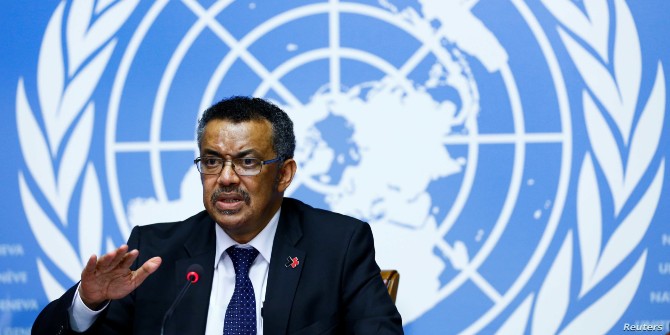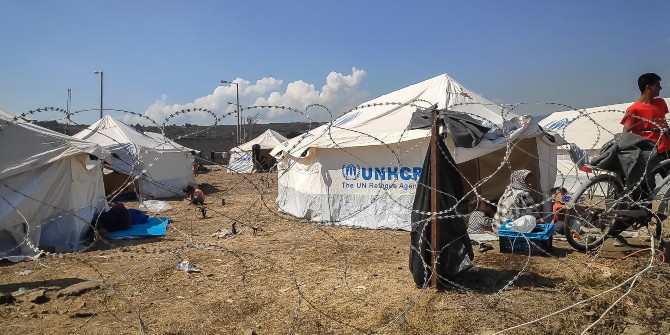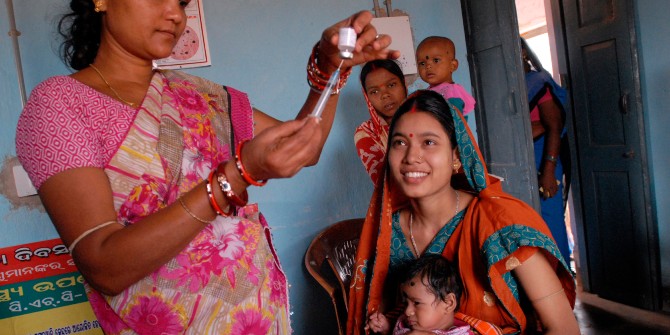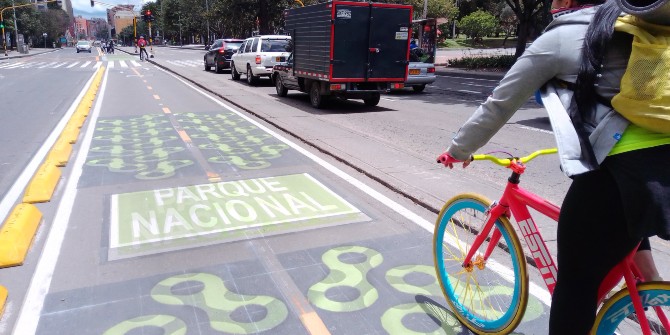The wishlist for a pandemic treaty is long, and there are formidable obstacles to achieving it. Maike Voss (German Alliance on Climate Change and Health, KLUG), Clare Wenham (LSE), Mark Eccleston-Turner (Kings College London), Rithika Sangameshwaran and Bianka Detering (KLUG) look at the challenges involved.
After the multiple governance failures of the pandemic, the international community agreed at a Special Session of the World Health Assembly (WHASS) on the need to draft a convention, agreement or other international instrument for pandemic preparedness and response. An intergovernmental negotiating body (INB) was established to draft it under the Constitution of the World Health Organization (WHO).
The justification for a pandemic treaty is that whilst the technical expertise on how to govern and end a pandemic exists, the political will to do so is missing. A new pandemic treaty cannot stand on its own and will not be the solution to all failures in global health. Nonetheless, the INB, WHO member states and in particular the German government in its current G7 presidency can take concrete next steps, without stretching a treaty’s mandate so far as to make it unachievable.
A shared understanding of the problem that needs to be fixed
A lack of clarity and coherence on the specific problems the treaty aims to resolve risks rendering it futile. The IHR failed to prevent COVID-19 becoming a global pandemic. Multiple contraventions included (presumed) limitations on sharing of information of infectious disease outbreaks; the implementation of travel and trade restrictions despite the WHO not recommending them; and a failure to follow the other temporary recommendations issued by the WHO IHR Emergency Committee. Furthermore, IHR obligations are heavily tailored towards prevention and detection of pathogens, and very limited on response stages to prevent transmission. However, to date there is no comprehensive analysis as to why governments failed to comply with their IHR obligations.
Process for the treaty text and beyond
A draft text is expected for 1 August 2022. To get there, a member state-led, transparent, inclusive and fair procedure is necessary, with full participation of all member states with meaningful inclusion of non-state actors. Nikogosian & Kickbusch (2021) recommend involving the World Bank, International Monetary Fund, World Trade Organisation and International Labour Organisation for treaty negotiations. So that the treaty is not seen as an instrument pushed by high-income countries, the involvement of important regional bodies such as the African Union, ASEAN, Mercosur and others will be crucial. Without the support of civil society, a pandemic treaty will not see the light of day, or it will not protect those most at risk.
Instrument form
The treaty is expected to be modelled as a Framework Convention complemented by additional instruments (protocols, guidelines or standards) for adoption by governance bodies created through the treaty. This approach allows parties to reach consensus on high-level legally binding principles and commitments within the initial Convention – i.e., the meaning of ‘equity’ or ‘solidarity’ in a health emergency, and states that parties give a commitment to act in solidarity during such an emergency, followed by agreements adding detailed commitments regarding operationalising these commitments – i.e., a protocol regarding pathogen sharing, or one on equitable access to vaccines, etc.
While a framework convention may seem appealing from a “get it done” perspective, its inability to create a harmonious international legal regime could leave significant gaps. By enabling states to select which protocols within the treaty they wish to be party to, the approach risks states ratifying different elements of the overall treaty package, leading to more fragmentation in global health governance. On the other hand, this may promote a broad consensus to overarching principles and norms, but with national differentiation regarding specific obligations.
The long list of thematic wishes
These include:
- Anchoring the treaty in human rights and addressing the principles of the right to health, equity, solidarity, transparency, trust, and accountability;
- Using a One Health approach for pandemic prevention and early detection
- Stronger health systems information and reporting mechanisms; including a better use of digital technology for data collection and sharing
- A reform of the WHO alarm mechanism, the public health emergency of international control (PHEIC) declaration process and travel and travel restrictions;
- Pathogen and genomic data sharing
- Resilience to and response to pandemics, including universal access to medicines, vaccines, diagnostics, medical equipment and treatments as well as resilient supply chains, technology transfer
- Investments in health system strengthening and increased financing for pandemic preparedness and response
- Stronger international health framework with a strengthened WHO at the centre and increase global coordination
- Reinforcing legal obligations and norms of global health security and standard settings of health care systems
- Coordination of research and development (R&D).
So much is being touted for inclusion that achieving it all seems unlikely. If the substantive content does make it to the drafting and negotiation process of the INB, it is unlikely there will be consensus on these issues from member states, which in turn will limit ratification of any treaty nationally, particularly if it is seen to infringe on trade or sovereignty.
We suggest aiming to formalise cooperation on the systems that alert the world to a pandemic that triggers action in four areas, following the life cycle of an outbreak:
Pandemic prevention: proponents of the treaty push to address potential pandemic sources using the concept of One or Planetary Health and ‘deep prevention’ to include antimicrobial resistance (AMR), zoonoses, climate adaptation and mitigation and accidental pathogen release into the content discussion of a pandemic treaty.
Pandemic preparedness and detection: There is an urgent need to promote equity in pathogens and data sharing during outbreaks, as part of efforts to decolonise global health and the environment.
Pandemic response: The issue of equitable access to vaccines, diagnostics, therapeutics and equipment will be one of the most serious conversations taking place.
Financing pandemic preparedness and response: Financing for the pandemic treaty could come from the IMF as Special Drawing Rights or from the World Bank in the form of loans. A new pooled insurance mechanism could be established to share the risks associated with infectious disease outbreaks, while simultaneously using these financing resources to encourage compliance with a pandemic treaty. A new Global Health Security Financial Intermediary Fund (FIF) pushed by the US could be housed at the World Bank. The importance of sustainable financing would also entail an increase of compulsory and voluntary funding of the WHO by member states, public health taxation, and permanent endowments. This would allow for greater autonomy and support independent governance by shielding the body from excessive political influence. However, these discussions, while crucial to the future success of the WHO during a health emergency, are not part of the present treaty negotiations.

Interaction with the IHR
A potential alternative to the treaty would be to update the IHR, as the US and European Commission are suggesting, to make them more relevant and enhance governance and compliance gaps to move beyond the current “name and shame”. However, reopening the text of the IHR for renegotiation runs the risk of losing some of what is currently there. States have clarified their expectations that any treaty must work in conjunction with IHR (2005), with legally binding enforcement mechanisms, a strong secretariat, clear metrics for monitoring and evaluation, and form part of broader WHO reform efforts.
Enhanced response will enhance compliance
For this treaty to have teeth, the organisation that governs it needs to have the power – either political or legal – to enforce compliance. In its current form, the WHO does not possess such powers. In order to enforce compliance, some commentators have recommended concluding the treaty at the United Nations level. However, we fear that it has been already decided with the INB (mandated by WHASS) that a treaty will be developed under the roof of WHO.
To move on with the treaty, WHO therefore needs to be empowered — financially, and politically. If international pandemic response is enhanced, compliance is enhanced. In case of a declared health emergency, resources need to flow to countries in which the emergency is occurring, triggering response elements such as financing and technical support. These are especially relevant for LMICs, and could be used to encourage and enhance the timely sharing of information by states, reassuring them that they will not be subject to arbitrary trade and travel sanctions for reporting, but instead be provided with the necessary financial and technical resources they require to effectively respond to the outbreak. High-income settings may not be motivated by financial resources in the same way as their low-income counterparts. An adaptable incentive regime is therefore needed, with sanctions such as public reprimands, economic sanctions, or denial of benefits.
Next steps
It will likely take years to negotiate the treaty. The world cannot wait until 2024. The minimum outcome of the treaty negotiations are trustworthy relations between the global south and the global north; the maximum outcome must be trust, built by a process that leads to a pandemic treaty with teeth, and a sensible incentive regime.
To get there, negotiators and all WHO member states need to be willing to compromise and to collectively chose a set of rules with which they are willing to comply in both health emergencies and ‘peacetime’. At the same time, a treaty cannot and will not bind together all the proposed initiatives, and will not fix all the challenges the WHO and global health face.
The world cannot wait for the pandemic treaty to be implemented to accelerate the response to the current pandemic, but we believe that in the process of developing it, trust can be (re)built.
This post represents the views of the authors and not those of the COVID-19 blog, nor LSE. It is an edited extract from A new treaty on pandemics: key to (re)build trust in international cooperation?, a policy brief by the German Alliance on Climate Change and Health, King’s College London, and LSE.






In response to the WHO Pandemic Response Plan, I believe this should include:
1. Non-binding recommendations only.
2. Acknowledgement of Nation-State sovereignty.
4. The right of the individual to decide according to honest risk analysis and informed consent.
5. Transparency:
a. All trial information of “vaccines” will be made public before general use.
b. Doctors shall have autonomy to pre-treat patients.
c. There shall be no censorship of doctors, nurses or therapeutics.
5. National and local leadership retain full autonomy, reserving the right to make decisions based on what is best for their own people, contrary to the WHO.
6. The ability of nations and local municipalities to opt out of any and all portions of the agreement as they see fit, without consequence.
7. An open and transparent process with the ability for all people of the world to vote on including failsafe measures that will prevent the application of the global agreement in places where a majority of the people do not want it.
8. Measures that do not allow for influence in the process by any and all pharmaceutical companies or other global health profiteers.
Completely agree. Why should any country give too much power to a bunch of corrupt bureaucrats anyway? The heads of state, mostly corrupt as well, including joe Biden, cannot be trusted to speak for the people! Limit their power, keep our freedoms. Covid taught us that much.
this should have no legal right to tell any country or person as to what they should do in a pandemic. Health advisers are their to give what they think is the best way forward it is up to the individual as to what they do with that advise,
this is just another move towards dictatorship,
I believe in freedom and will not Bow to dictatorship.
This is absolute madness on so many levels.
Is this not just a backdoor for digital ID’s and global vaccine mandates, disguised in typical neoliberal verbosity?
Having a joined up global response to pandemics does make sense. As long as that response is genuinely in the public interest. Covid has demonstrated in crystal clarity that our institutions of public health (and indeed public policy) cannot be trusted to govern in our interests. Perhaps time for some introspection from the Worlds Leading Public Policy institute.
The Magesterium have spoken! WHO etc. are not an elected body, why would any advisory organisation be given so much over-arching power to control lives?
After cross-examination of events, I think each “W.H.O. Member Nations” must retain FULL Sovereignty to make final decisions.
There is no such “One Size Fits All” answer to such Health Emergencies; therefore it is imperative that individual cabinets of Government keep Full Sovereignty of how to tackle such complex pandemic related issues.
Recommendations ONLY from the WHO. Thank you.
“An adaptable incentive regime is therefore needed, with sanctions such as public reprimands, economic sanctions, or denial of benefits” . Seriously? Do you really think this is the way forward? Do you think they’re happy in Shang hai right now? Sheltering from a 99.9% survivable illness. This is crazy crazy stuff.
Yet another bunch of overpaid bureaucrats seeking to get even more control over our lives. This all reeks of another step in Klaus Schwab’s dream of a Great Reset where we will own nothing and be happy. More control for the so called elite, and not forgetting that our old friend Gates, the one with a burgeoning God complex has his fingers deep in this pie particularly with the amount of involvement he has in the WHO. If we learn one thing from this Covid fiasco it is that when governments take freedoms away they only return them grudgingly, if at all.
World socialism by stealth.
This “Treaty” is not to be trusted. All it does is give a bunch of reckless, dishonest, power-hungry, unelected individuals (most of which are not doctors) a huge amount of power over not only Americans, but also over the global population. If you take the time to read the Treaty, you will see many terms that are never defined which is done on purpose. This is dangerous in itself because it allows some unknown person or people to come up with those definitions, and I guanantee their definition will be much different than you or I would select. Unfortunately, at that point, there is no way for those groups unfairly singled out to fight back. Also, because of the nature of Treaties, this one, like all others are hard, or impossible to legally dissolve.
This is a bad Treaty, and another reason you can be sure that is the case, is the lack of discussion this Treaty has received.
The Pandemic Treaty and the new health regulations together give WHO – undemocratic and funded by non-democratic parties – the right to permanently suspend national constitutions, put everyone under lockdown, require people to take experimental drugs with no proof of efficacy or safety and no requirement of informed consent. WHO has no accountability. It hasn’t even conducted an assessment of its own Covid response (and no wonder given how badly it did). WHO will have the right to impose all this by merely declaring a threat to public health, which can include their assessment of how to respond to the climate crisis. WHO will also have the right to censor information. This will be the end of science, as only in the free market of ideas can we make scientific progress. I urge everyone to contact their elected representatives and ask them to stop the negotiations currently underway.